Pink Ash – Alphitonia petriei
Around the world there are 20 species of this distinctive tree, mostly in tropical Asia, while in Australia there are seven or eight species, found in eastern northern Australia. Alphitonias are known by several popular names which can cause some confusion in identifying a particular species. Pink Almond, White-leaf, White Ash, Soap Tree, Sarsaparilla, Red Ash, Red Almond, Foam-bark and Pink Ash are those names most commonly used.
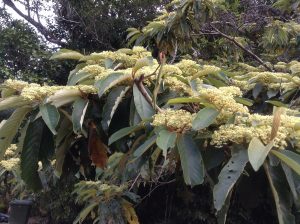
Alphitonia petriei is a pioneer species which grows rapidly on the edge of the forest or in a gap where sunlight can reach. Trees can grow to a height of 40 meters and sometimes look grotesque with gnarled and twisted limbs and branches which reach out impossible distances laterally from the trunk. At present trees around Paluma are particularly eye-catching as most are densely covered in white flowers, often with a tiered effect and, from a distance, appear like snow-laden Christmas trees.

The flowers which grow in dense panicles at the ends of branchlets and between leaves are white, cream or pale green. They have five petals, only 1.5 mm long which envelop the stamens. Flowering is usually from September through to March. Pollination is by beetles. Butterflies are also attracted to Alphitonia. The fruit is produced from February to July; globular, dark capsules, which ripen to reveal three orange to red seeds surrounded by a powdery flesh. Many birds, including King Parrots and Crimson Rosellas, feast on these while fallen fruit is eaten by cassowaries.
Leaves of the Alphitonia are simple, lanceolate and can be 65 to 180 mm long. The upper surface is glabrous and a dull grey-green in colour while the undersurface is whitish and slightly hairy. In some species of Alphitonia, notably A. excelsa, the leaves when rubbed in water will produce a soapy froth, hence the popular name Soap Tree. This species is more commonly found at a lower altitude than that of Paluma.
The bark on the trunk and limbs of this tree is grey, flaky, almost tessellated and if torn gives off a liniment-like odour. This is a distinctive feature of the tree. The strong liniment smell of broken twigs and leaves is methyl salicylate, produced in the cambial layers of the limbs. 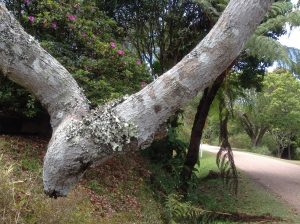 Some people liken the smell to sarsaparilla, hence another popular name for this tree. Rainforest Aborigines used the Alphitonia petriei medicinally, probably as a liniment.
Some people liken the smell to sarsaparilla, hence another popular name for this tree. Rainforest Aborigines used the Alphitonia petriei medicinally, probably as a liniment.
Alphitonia petriei is one of the many rainforest trees that contain bio-active chemicals which could potentially produce valuable medicinal drugs. In his book ‘Plants of Tropical North Queensland’, John Beasley says that “research at Paluma found that more than half the trees tested showed marked bioactivity.”
There are many of these interesting trees growing in and around Paluma. Particularly good specimens may be seen outside No 62 Mount Spec Road and at the corner of the western entry to Lennox Crescent from Mount Spec Road.
Text and photos by Colwyn Campbell
 Paluma has an entry in the latest issue of the RACQ Road Ahead magazine in the “My Town” section.
Paluma has an entry in the latest issue of the RACQ Road Ahead magazine in the “My Town” section.
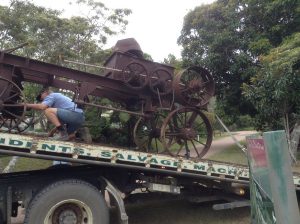 On Friday 12th October, two new arrivals appeared on the lawns adjoining Lennox Crescent and Mount Spec Road. They emerged from a dense cloud mist which enveloped Paluma that day, like visitors from the mists of time. The ambience seemed fitting, as these new arrivals are relics of a bygone era; a timber hauler, which was used to haul timber on Mt Spec and a bitumen mixer used in surfacing the Range Road during the 1950’s. The large, solid steel machines are well preserved and represent the epitome of engineering design and workmanship of their day.
On Friday 12th October, two new arrivals appeared on the lawns adjoining Lennox Crescent and Mount Spec Road. They emerged from a dense cloud mist which enveloped Paluma that day, like visitors from the mists of time. The ambience seemed fitting, as these new arrivals are relics of a bygone era; a timber hauler, which was used to haul timber on Mt Spec and a bitumen mixer used in surfacing the Range Road during the 1950’s. The large, solid steel machines are well preserved and represent the epitome of engineering design and workmanship of their day. towed behind a small bulldozer. A steel rope from the winch on the dozer ran over the pulley on the bob-tail. By retracting the winch rope the heavy end of the log would be lifted off the ground and dragged out of the scrub to the loading ramps. The logs would then be loaded onto trucks towing timber jinkers for transport to saw mills or the rail siding at Moongobulla.
towed behind a small bulldozer. A steel rope from the winch on the dozer ran over the pulley on the bob-tail. By retracting the winch rope the heavy end of the log would be lifted off the ground and dragged out of the scrub to the loading ramps. The logs would then be loaded onto trucks towing timber jinkers for transport to saw mills or the rail siding at Moongobulla. Until then the road was unsealed. The bitumen mixer carried a drum that had two sets of paddles running through it which mixed the liquid hot tar with sand and gravel to produce bitumen for sealing the road. Unfortunately the engine driving the mixer via two leather belts, is missing. Possibly it was a Southern Cross engine, one of which may eventually be obtained and set in place.
Until then the road was unsealed. The bitumen mixer carried a drum that had two sets of paddles running through it which mixed the liquid hot tar with sand and gravel to produce bitumen for sealing the road. Unfortunately the engine driving the mixer via two leather belts, is missing. Possibly it was a Southern Cross engine, one of which may eventually be obtained and set in place.

 Some people liken the smell to sarsaparilla, hence another popular name for this tree. Rainforest Aborigines used the Alphitonia petriei medicinally, probably as a liniment.
Some people liken the smell to sarsaparilla, hence another popular name for this tree. Rainforest Aborigines used the Alphitonia petriei medicinally, probably as a liniment.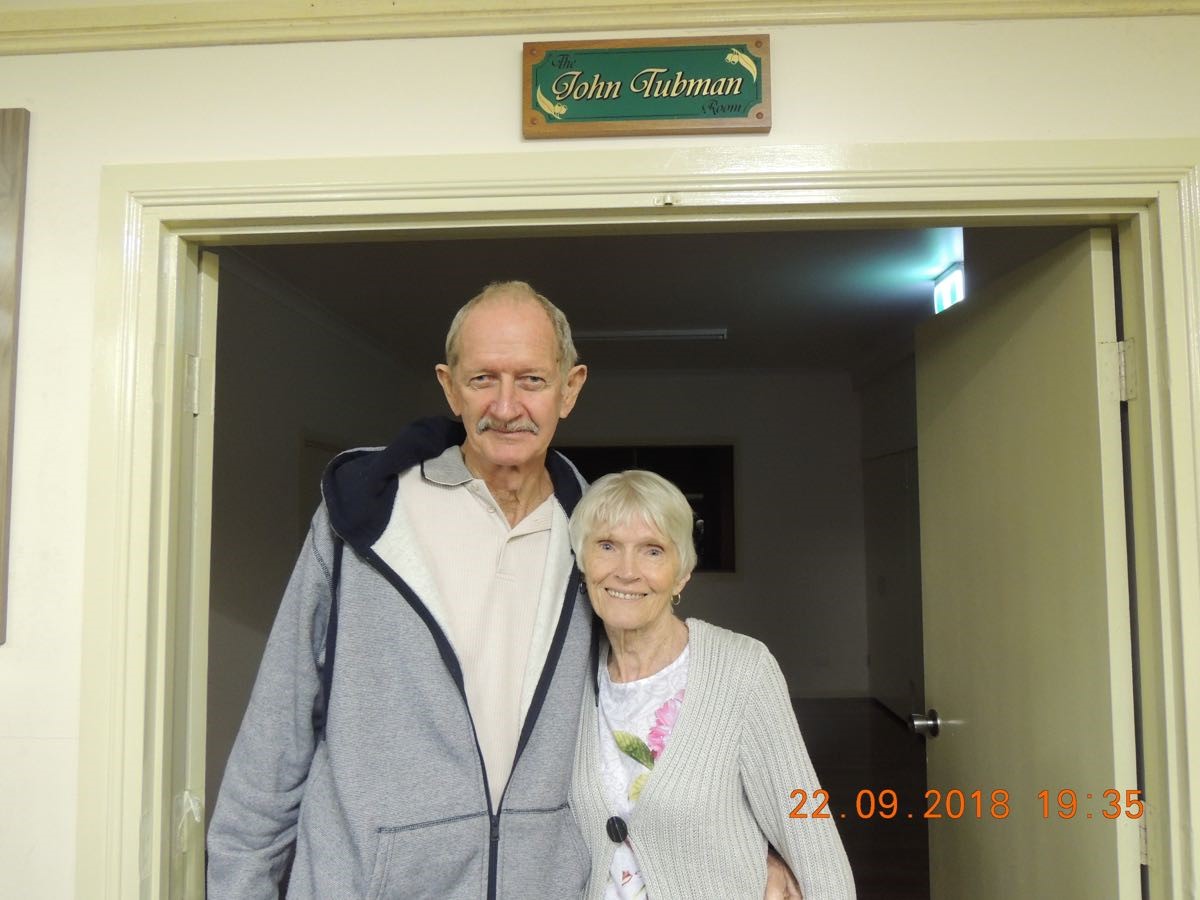

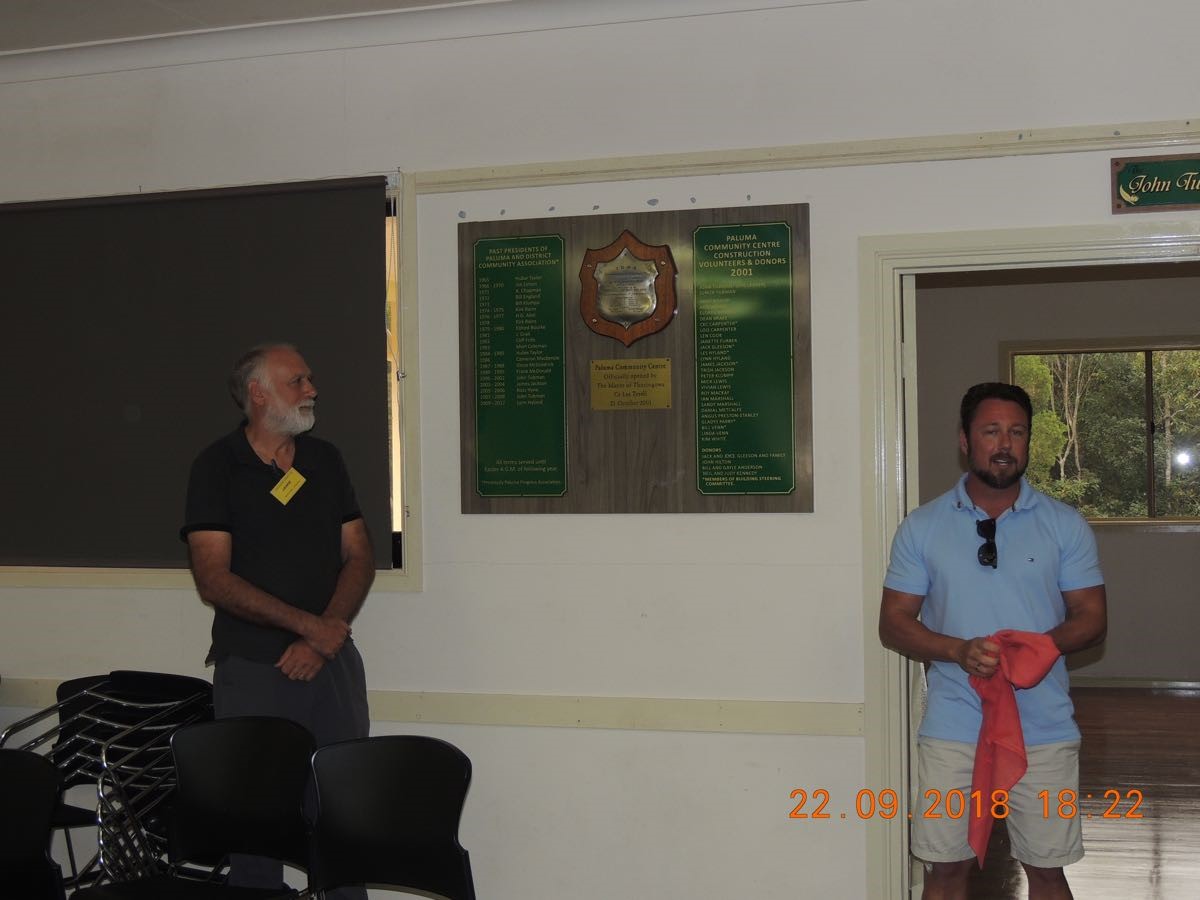
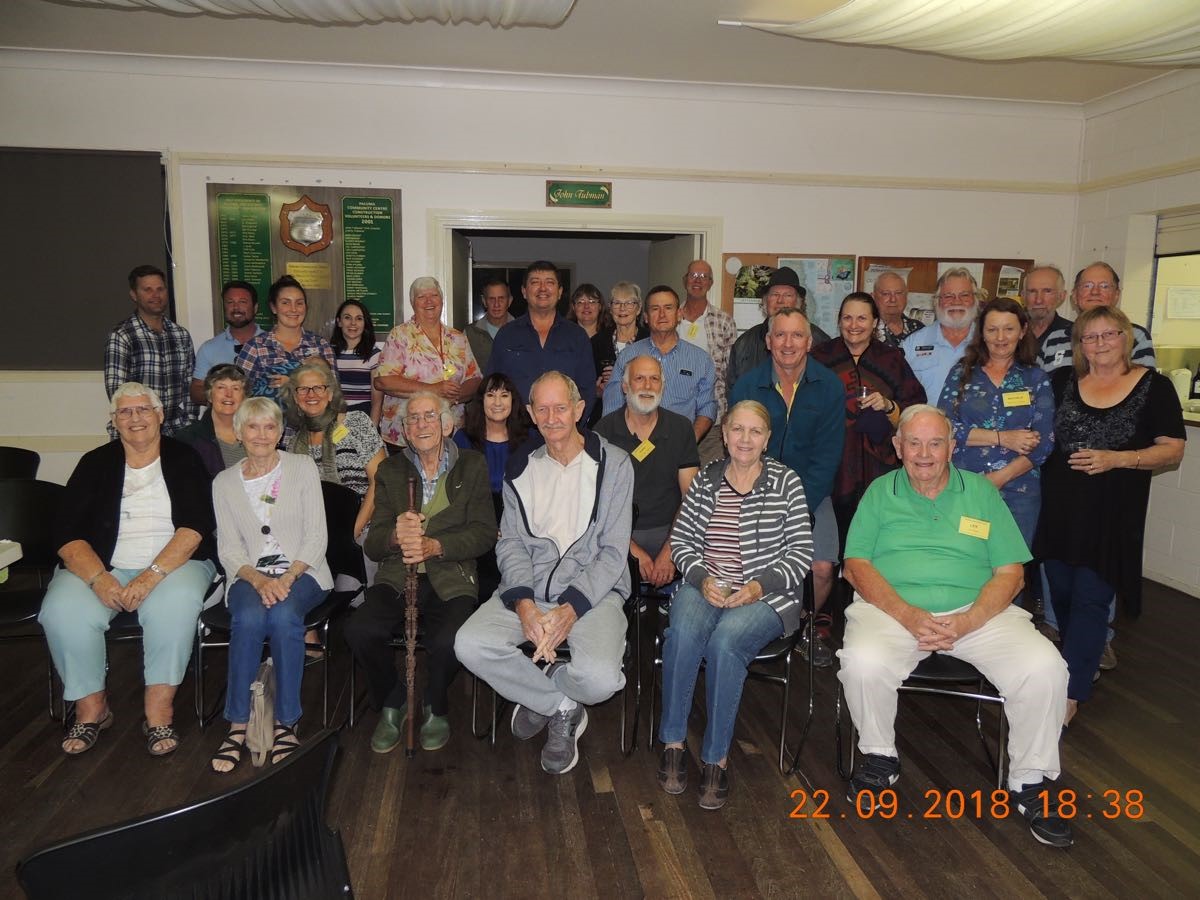
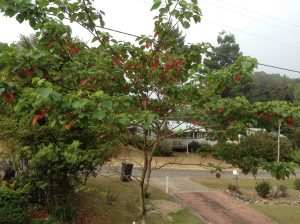

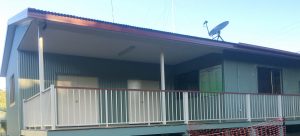 After more than a year of planning and many months of construction, the new Training/Meeting Room at the Community Hall has been completed!
After more than a year of planning and many months of construction, the new Training/Meeting Room at the Community Hall has been completed!